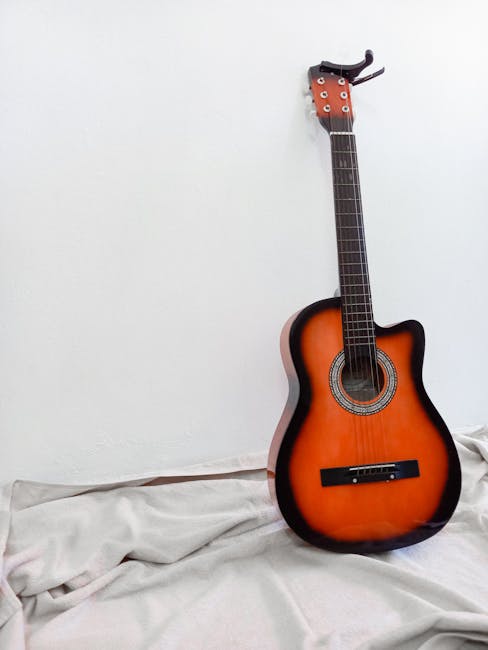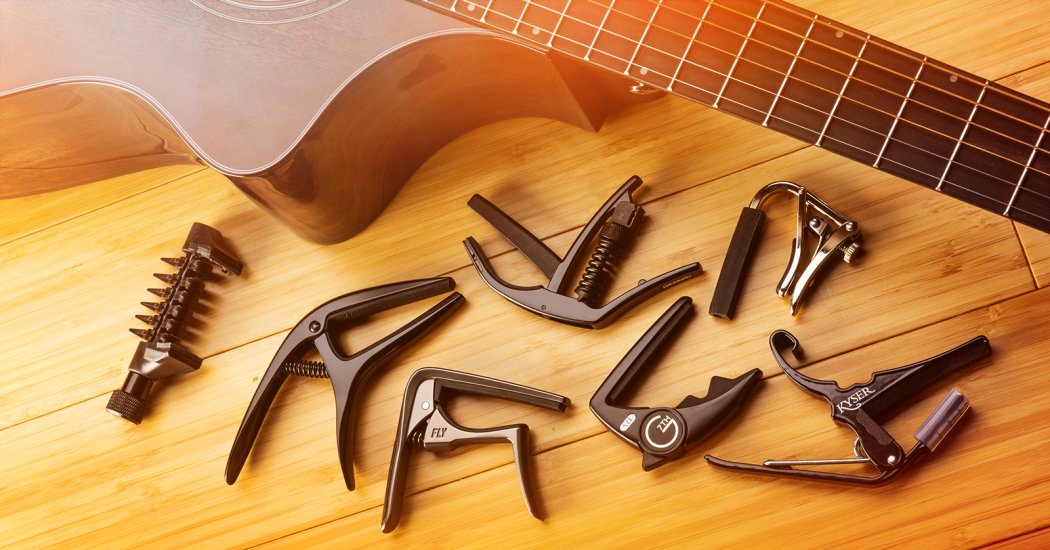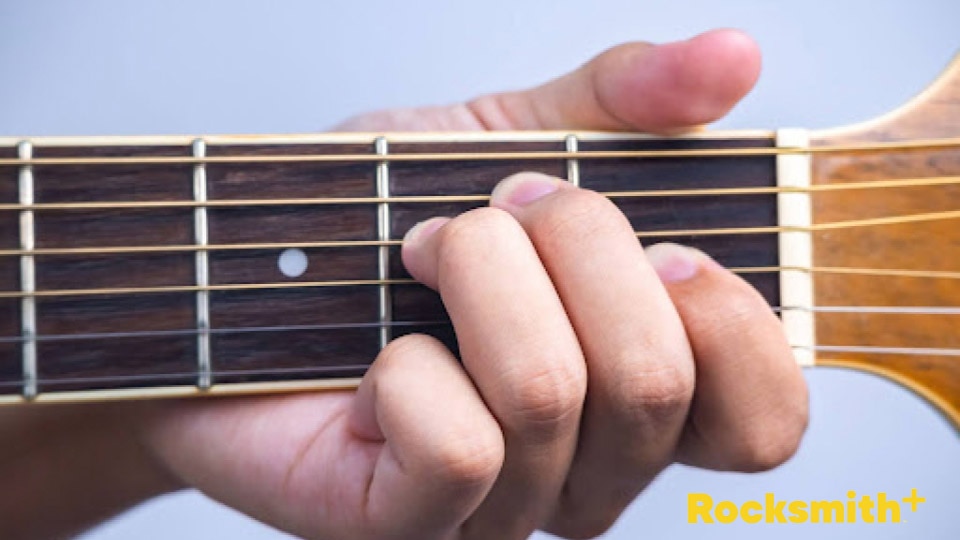So you’ve mastered the art of strumming and fingerpicking on your guitar, but now you’re ready to take your playing to the next level. Enter: the capo. This small yet mighty tool has the power to transform the sound of your instrument in ways you never thought possible. But before you start clamping down on your strings willy-nilly, let us guide you through the dos and don’ts of capo usage with our Ultimate Capo Guide for Guitarists. Get ready to unleash your inner rock god (or goddess) and reach new heights of musical prowess. Let’s dive in!
Contents
- 1 Understanding the Purpose and Types of Guitar Capos
- 2 Exploring the Various Capo Designs for Different Guitars
- 3 Key Considerations When Choosing the Best Capo for Your Needs
- 4 The Impact of Capo Placement on Guitar Tone and Playability
- 5 Mastering the Technique: How to Properly Use a Capo
- 6 Common Mishaps to Avoid When Using a Capo on Your Guitar
- 7 Elevating Your Guitar Sound with Advanced Capo Strategies
- 8 FAQs
- 9 Now go forth and wield your newfound capo knowledge like a guitar-wielding superhero!
Understanding the Purpose and Types of Guitar Capos
So you’ve picked up a guitar capo but have no clue what it’s for, huh? Well, fear not my fellow musician! Let me enlighten you on the mystical world of guitar capos.
First things first - let’s talk about the purpose of these little contraptions. Essentially, a capo is like a temporary nut for your guitar. It helps you change the pitch of your strings without having to retune your entire instrument. In other words, it’s a lazy musician’s dream come true!
Now, onto the types of capos out there. There are a few different variations, each with its own quirks and charms. Let’s break it down for you in simple terms:
- **Spring-loaded capos:** The OG of capos. Simple, easy to use, and perfect for beginners.
- **Trigger capos:** These bad boys are like the Ferraris of capos. Fast, efficient, and you’ll feel like a rockstar using one.
- **Partial capos:** For those who like to get a little experimental. These capos allow you to create unique tunings and sounds that will blow your mind.
Exploring the Various Capo Designs for Different Guitars
So you’ve decided to take your guitar playing to the next level and invest in a capo. But with so many capo designs out there, how do you know which one is right for your guitar? Fear not, dear reader, for we are here to guide you through the wonderful world of capo selection!
First up, we have the basic spring-loaded capo. This trusty capo is perfect for most standard acoustic and electric guitars. Its simple design and ease of use make it a popular choice for beginners and seasoned pros alike. Just clamp it onto the desired fret and strum away!
Next, we have the partial capo. This funky little contraption allows you to capo only certain strings, creating unique chord voicings and opening up a world of creative possibilities. Perfect for experimental guitarists who want to break free from traditional chord shapes.
And let’s not forget about the trigger capo. This sleek, ergonomic design makes it a breeze to change positions on the fly. Plus, its adjustable tension feature ensures a perfect fit on any guitar neck. Say goodbye to tuning issues and hello to effortless capo changes!

Key Considerations When Choosing the Best Capo for Your Needs
So, you’ve decided to take your guitar playing to the next level and invest in a capo. But with so many options on the market, how do you choose the best one for your needs? Fear not, dear musician, for I am here to guide you through the key considerations you should keep in mind.
First and foremost, think about what type of guitar you have. Different capos are designed for specific types of guitars, whether it be acoustic, electric, or classical. Make sure you choose a capo that is compatible with your beloved instrument to ensure a perfect fit.
Next, consider the material of the capo. You want something sturdy but not too heavy that it weighs your guitar down. Opt for a capo made from high-quality materials like aluminum or steel, as they are durable yet lightweight.
Lastly, think about the design of the capo. Do you want a traditional spring-loaded capo or something more modern like a quick-release capo? Maybe you prefer a sleek black capo or something more flashy and colorful. Whatever your preference, make sure you choose a capo that not only suits your playing style but also makes you feel like a rockstar!

The Impact of Capo Placement on Guitar Tone and Playability
Have you ever wondered how moving that tiny clip-on capo up or down your guitar neck can completely change the way your instrument sounds and feels? might not be something most people think about, but trust me – it’s a game changer!
By placing your capo closer to the fret or further away, you can completely alter the pitch and resonance of your strings. Want a brighter, more twangy sound? Move that capo up a few frets. Looking for a warmer, mellower tone? Slide it back towards the headstock. The possibilities are endless!
Not only does capo placement affect tone, but it can also make a huge difference in playability. By adjusting where you place the capo, you can customize the string tension and spacing to fit your playing style. Whether you’re shredding through a complicated solo or strumming some laid-back chords, finding the perfect capo placement can make all the difference.
So next time you’re playing around with your capo, don’t just slap it on randomly and hope for the best. Take some time to experiment with different placements and see how it can transform your sound and improve your playing experience. You never know – you might discover a whole new side of your guitar that you never knew existed!

Mastering the Technique: How to Properly Use a Capo
So, you’ve finally decided to incorporate a capo into your guitar playing arsenal. Congratulations! You’re about to unlock a whole new world of musical possibilities. But before you jump in headfirst, let’s talk about how to properly use a capo like a pro.
First things first, make sure you place the capo directly behind the fret you want to capo. This may seem obvious, but you’d be surprised how many beginners end up with a wonky sounding guitar because they didn’t position the capo correctly. Trust me, your guitar will thank you for this small act of kindness.
Next, give your capo a firm but gentle squeeze to ensure it’s securely attached to the neck of your guitar. You don’t want it slipping and sliding around while you’re in the middle of a killer solo. Remember, a happy capo equals a happy guitarist.
Lastly, experiment with different capo positions to discover the unique sounds and tones you can achieve. Don’t be afraid to get creative and think outside the box. Who knows, you might stumble upon a hidden gem that becomes your signature sound. Embrace the capo, my friend, and let your musical journey begin!
Common Mishaps to Avoid When Using a Capo on Your Guitar
So, you’ve decided to venture into the world of using a capo on your guitar. Good for you! But beware, there are some common mishaps that can occur if you’re not careful. Let’s dive in and explore how you can avoid these pitfalls.
First off, make sure you position the capo properly on the fretboard. **This may seem like a no-brainer, but you’d be surprised at how many people end up with a wonky sounding guitar because they didn’t place the capo correctly**. Remember, the capo should be snug against the fret, not too loose and not too tight. Take your time to adjust it properly before strumming away.
Another mishap to watch out for is not tuning your guitar after putting the capo on. **The capo can throw off the tuning of your strings, so it’s crucial to retune your guitar after applying the capo**. Keep your tuner handy and make sure everything is in tune before you start playing, or else you’ll be in for a not-so-pleasant musical experience.
Lastly, be mindful of the type of capo you’re using. **There are different types of capos, each with its own quirks and drawbacks**. Make sure you do your research and choose the right capo for your guitar and playing style. And remember, practice makes perfect when it comes to using a capo, so don’t get discouraged if you hit a few wrong notes along the way.
Elevating Your Guitar Sound with Advanced Capo Strategies
So you’ve mastered the basics of using a capo on your guitar, but now you’re ready to take your sound to the next level. With these advanced capo strategies, you’ll be able to elevate your playing to new heights!
First up, let’s talk about partial capoing. Instead of covering all six strings with your capo, try placing it on only a few strings to create interesting open tunings. This can give your sound a unique and ethereal quality that will set you apart from the average guitar player.
Another trick to try is using a capo with a cutout. This allows you to change the tuning of specific strings while keeping others unaffected. Experiment with different combinations to create complex and rich harmonies that will make your music stand out.
Finally, don’t be afraid to get creative with your capo placement. Try offsetting it slightly to create dissonance or using it in unconventional ways to achieve unexpected results. The sky’s the limit when it comes to experimenting with capo techniques, so don’t be afraid to think outside the box and push the boundaries of what’s possible with your guitar.
FAQs
Why do I need a capo for my guitar?
Because it’s the magical tool that can instantly change the key of a song without having to learn new chords. Plus, you’ll look super cool when you rock out with one on your guitar.
How do I choose the right capo for my guitar?
First, make sure it actually fits your guitar. You don’t want it sliding around like a drunken monkey on your fretboard. Second, choose a capo that’s easy to use, because let’s face it, guitar players don’t have time for complicated gadgets.
Can I use a capo for any type of guitar?
Absolutely! Whether you play acoustic, electric, or even the ukulele (yes, we see you, hipster guitarist), a capo can work its magic on any stringed instrument. Just be careful not to accidentally capo your dog’s tail.
Are there any cool tricks I can do with a capo?
Oh, absolutely! You can create some funky chord voicings, give your solos a fresh sound, or even cheat your way through difficult songs by transposing them into easier keys. Just don’t rely on the capo too much, or your guitar might file for a divorce.
Do famous guitarists use capos?
Heck yeah! Some of your guitar heroes have been known to bust out a capo on stage. So if you ever doubted the coolness factor of using a capo, just remember that even your idols can’t resist its power.
Now go forth and wield your newfound capo knowledge like a guitar-wielding superhero!
Whether you’re a seasoned pro or just starting out, the capo is your trusty sidekick in the world of guitar playing. So go ahead, experiment with different positions, find the perfect key for your voice, and serenade friends and family with your newfound capo powers. And remember, with great capo power comes great responsibility (to never lose that darn thing)! Keep on rocking, fellow guitarists!



